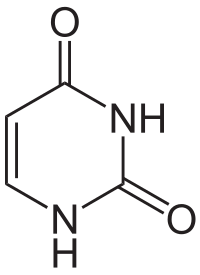
An Electron Acceptor Analogue for Lowering Trap Density in Organic Solar Cells.
Sign Up to like & getrecommendations! Published in 2021 at "Advanced materials"
DOI: 10.1002/adma.202008134
Abstract: Typical organic semiconductor materials exhibit a high trap density of states, ranging from 1016 to 1018 cm-3 , which is one of the important factors in limiting the improvement of power conversion efficiencies (PCEs) of… read more here.
Keywords: organic solar; electron acceptor; density; trap density ... See more keywords

Metabolic engineering of Mannheimia succiniciproducens for malic acid production using dimethylsulfoxide as an electron acceptor
Sign Up to like & getrecommendations! Published in 2022 at "Biotechnology and Bioengineering"
DOI: 10.1002/bit.28242
Abstract: Microbial production of various TCA intermediates and related chemicals through the reductive TCA cycle has been of great interest. However, rumen bacteria that naturally possess strong reductive TCA cycle have been rarely studied to produce… read more here.
Keywords: malic acid; metabolic engineering; mannheimia succiniciproducens; production ... See more keywords

Saturated Heavier Group 14 Compounds as σ -Electron-Acceptor (Z-Type) Ligands.
Sign Up to like & getrecommendations! Published in 2017 at "Chemical record"
DOI: 10.1002/tcr.201600061
Abstract: This review article describes the chemistry of transition-metal complexes containing heavier group 14 elements (Si, Ge, and Sn) as the σ-electron-acceptor (Z-type) ligands and discusses the characteristics of bonds between the transition metal and Z-type… read more here.
Keywords: electron acceptor; type; type ligands; acceptor type ... See more keywords

Multiple electron acceptor-mediated sulfur autotrophic denitrification: Nitrogen source competition, long-term performance and microbial community evolution.
Sign Up to like & getrecommendations! Published in 2021 at "Bioresource technology"
DOI: 10.1016/j.biortech.2021.124918
Abstract: Sulfur-driven autotrophic denitrification (SDAD) is feasible for the treatment of low-C/N-ratio and sulfur-laden wastewaters. The nitrite accumulated in SDAD will affect the performance and stability of the system but can be a potential electron acceptor.… read more here.
Keywords: acceptor mediated; autotrophic denitrification; electron acceptor; multiple electron ... See more keywords

Tuning the solid-state emission of small push-pull dipolar dyes to the far-red through variation of the electron-acceptor group
Sign Up to like & getrecommendations! Published in 2018 at "Dyes and Pigments"
DOI: 10.1016/j.dyepig.2018.03.049
Abstract: Series of solid-state emitters based on the D-π-A dipolar structure and featuring various electron-donor and electron-acceptor groups were designed, and their spectroscopic properties studied. From weak emission in dilute solutions, intense emissions in aggregated state… read more here.
Keywords: state; solid state; electron acceptor; emission ... See more keywords

Dyes with tunable absorption properties from the visible to the near infrared range: 2,4,5,7-Tetranitrofluorene (TNF) as a unique electron acceptor
Sign Up to like & getrecommendations! Published in 2021 at "Dyes and Pigments"
DOI: 10.1016/j.dyepig.2021.109250
Abstract: Abstract Fourteen dyes based on 2,4,5,7-tetranitrofluorene (TNF) as the electron acceptor have been designed and prepared in a one-step synthesis. By modifying the electron donor, optical properties of the dyes could be efficiently tuned and… read more here.
Keywords: dyes tunable; electron; absorption; tetranitrofluorene tnf ... See more keywords

Novel BODIPY-C 60 derivatives with tuned photophysical and electron-acceptor properties: Isoxazolino[60]fullerene and pyrrolidino[60]fullerene
Sign Up to like & getrecommendations! Published in 2018 at "Journal of Luminescence"
DOI: 10.1016/j.jlumin.2017.09.043
Abstract: Abstract Two new BODIPY-C 60 systems capable of exhibiting photoinduced charge separation have been designed, synthesized and characterized using various techniques. In these derivatives, the electron donor was BODIPY with two alkoxyphenylethynyl substituents and a… read more here.
Keywords: bodipy; novel bodipy; bodipy derivatives; electron acceptor ... See more keywords

Carbazole-dendrite-encapsulated electron acceptor core for constructing thermally activated delayed fluorescence emitters used in nondoped solution-processed organic light-emitting diodes
Sign Up to like & getrecommendations! Published in 2017 at "Organic Electronics"
DOI: 10.1016/j.orgel.2017.06.029
Abstract: Abstract Two fluorescent emitters, namely, phenylbis(4-(3,3″,6,6″-tetra- tert -butyl-9′H-[9,3′:6′,9″-tercarbazol]-9′-yl)phenyl)phosphineoxide (TPPOCz) and 9′,9‴′-(sulfonylbis(4,1-phenylene))bis(3,3″,6,6″-tetra- tert -butyl-9′H-9,3′:6′,9″- tercarbazole) (DBSOCz) are constructed. These compounds emit deep-blue and bluish-green signals and feature triphenylphosphine oxide/sulfonyldibenzene as electron acceptor core and carbazole dendrite… read more here.
Keywords: thermally activated; fluorescence; electron acceptor; delayed fluorescence ... See more keywords

Design of a highly crystalline low-band gap fused-ring electron acceptor for high-efficiency solar cells with low energy loss
Sign Up to like & getrecommendations! Published in 2017 at "Chemistry of Materials"
DOI: 10.1021/acs.chemmater.7b02853
Abstract: A fused-ring thiophene-thieno[3,2-b]thiophene-thiophene (4T)-based low-band gap electron acceptor, 4TIC, has been designed and synthesized for non-fullerene solar cells. The utilization of the 4T center core enhances the charge mobility of 4TIC and extends its absorption… read more here.
Keywords: band gap; electron acceptor; band; low band ... See more keywords

One-Step Synthesis of New Electron Acceptor for High Efficiency Solution Processable Organic Solar Cells
Sign Up to like & getrecommendations! Published in 2017 at "Journal of Physical Chemistry C"
DOI: 10.1021/acs.jpcc.7b08167
Abstract: Here, we demonstrate a new fulleropyrrolidine electron acceptor coded as DIF-ful-C60, following a one-step synthetic protocol. The absorption spectrum of DIF-ful-C60 suggests broader absorption over PC61BM while the highest occupied molecular orbital (HOMO) and lowest… read more here.
Keywords: dif ful; electron acceptor; one step; electron ... See more keywords

Z-Shaped Fused-Chrysene Electron Acceptor for Organic Photovoltaics.
Sign Up to like & getrecommendations! Published in 2019 at "ACS applied materials & interfaces"
DOI: 10.1021/acsami.9b10834
Abstract: A new fused-chrysene electron-donating core is synthesized, where chrysene is condensed with two thiophenes via two dihydrobenzene rings. Based on this building block coupled with 2 electron-accepting end groups 1,1-dicyanomethylene-3-indanone, a new Z-shaped fused-ring electron… read more here.
Keywords: chrysene; electron acceptor; electron; chrysene electron ... See more keywords